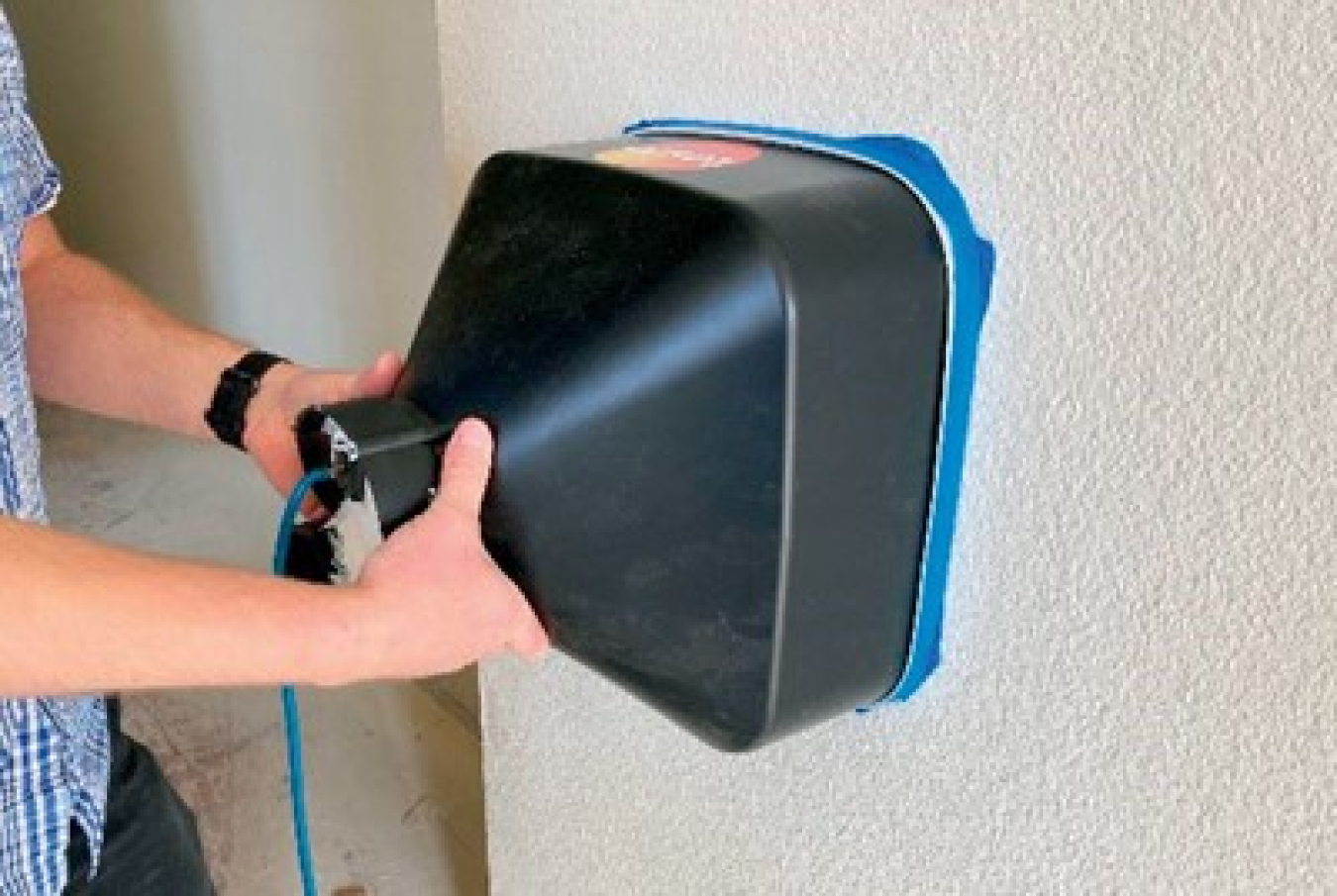PROJECT INFORMATION
Team: Center for Energy and Environment
Building Component: Envelope
Application: Retrofit
Climate Zone: All

Residential building envelopes are notoriously leaky, with unintended flows between conditioned and unconditioned spaces. Drafty homes can result in additional space heating and cooling equipment and increased energy use. Air sealing methods to address this vary as they most often depend on manual labor to visually identify each individual leak. In some cases, air leaks are impossible to see or reach manually and non-manual air sealing methods are required.
To address this, the Center for Energy and Environment team identified aerosol envelope sealing as a possible solution to seal existing homes more efficiently and at a reasonable cost. Aerosol sealing involves pressurizing the residence while distributing an aerosol fog of sealing material inside the house. When air escapes through the leaks, the sealant is carried to the leaks and sticks, sealing the leak.
The team started by focusing on new construction and has now expanded to demonstrate its benefits when used during renovations of existing structures. Research evaluated pre-aerosol sealing procedures for protecting surfaces and the most cost-effective process for sealing. Alternative aerosol sealing methods were considered, including sealing from the attic space.
Through testing across 34 sites, aerosol sealing saw an average leak reduction of 47%. Conclusions show the sealing process is more efficient and effective when part of a renovation project or during occupant change over. Sealing occupied homes takes longer because of the protective material used for surfaces inside the home.
Learn more about Building America's work.

